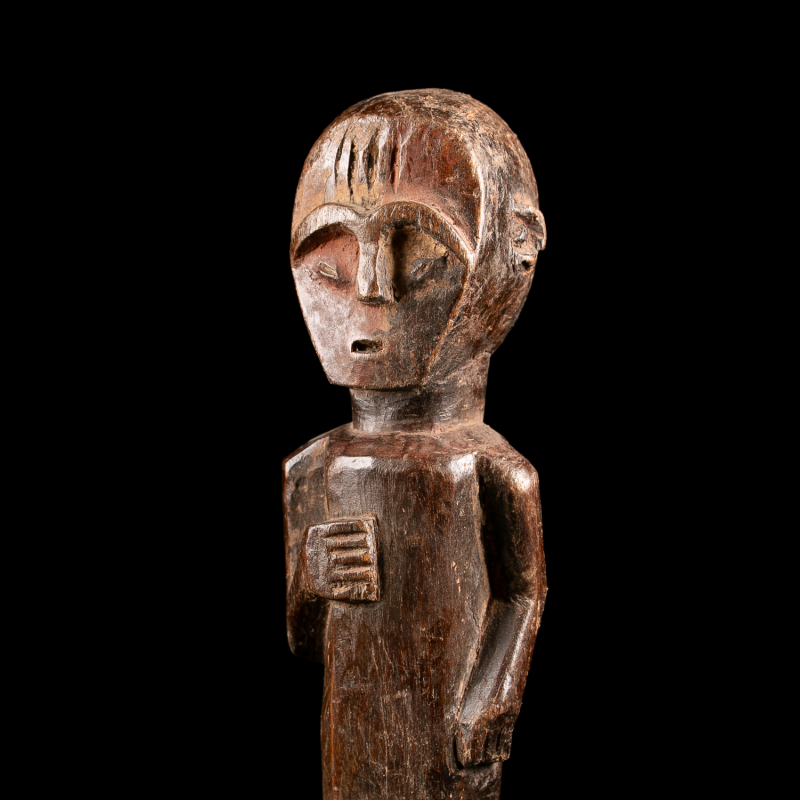











African Djonga or Jonga art, little-known and extremely rare, is distinguished by an extremely limited sculptural corpus, comprising a few dozen listed works, mainly held in public collections. The Djonga are located in the Sankuru province of the Democratic Republic of Congo.
These anthropomorphic Inungu sculptures are characterized by a subtle polychromy in shades of red, ochre, and yellow, contrasting with a minimalist modeling where the human representation is often reduced to the essentials: head, torso, and sometimes arms.
The recent discovery of a new Djonga sculpture enriches this rare heritage. Its refined aesthetic reaches an ultimate degree of simplification, limited to a slender head resting on a torso that is broadened at the base.
This sculptural approach embodies a form of powerful symbolism, where the expression of the human essence takes precedence over anatomical realism.
Djonga art, like other traditions of African statuary, reveals a unique mastery of volume and abstraction, testifying to a profound relationship between form and spirituality. These figures, although rare, offer a fascinating glimpse into the diversity and ingenuity of African tribal art, blending expression of identity and cultural transmission.
Data sheet

African Djonga or Jonga art, little-known and extremely rare, is distinguished by an extremely limited sculptural corpus, comprising a few dozen listed works, mainly held in public collections. The Djonga are located in the Sankuru province of the Democratic Republic of Congo.
These anthropomorphic Inungu sculptures are characterized by a subtle polychromy in shades of red, ochre, and yellow, contrasting with a minimalist modeling where the human representation is often reduced to the essentials: head, torso, and sometimes arms.
The recent discovery of a new Djonga sculpture enriches this rare heritage. Its refined aesthetic reaches an ultimate degree of simplification, limited to a slender head resting on a torso that is broadened at the base.
This sculptural approach embodies a form of powerful symbolism, where the expression of the human essence takes precedence over anatomical realism.
Djonga art, like other traditions of African statuary, reveals a unique mastery of volume and abstraction, testifying to a profound relationship between form and spirituality. These figures, although rare, offer a fascinating glimpse into the diversity and ingenuity of African tribal art, blending expression of identity and cultural transmission.